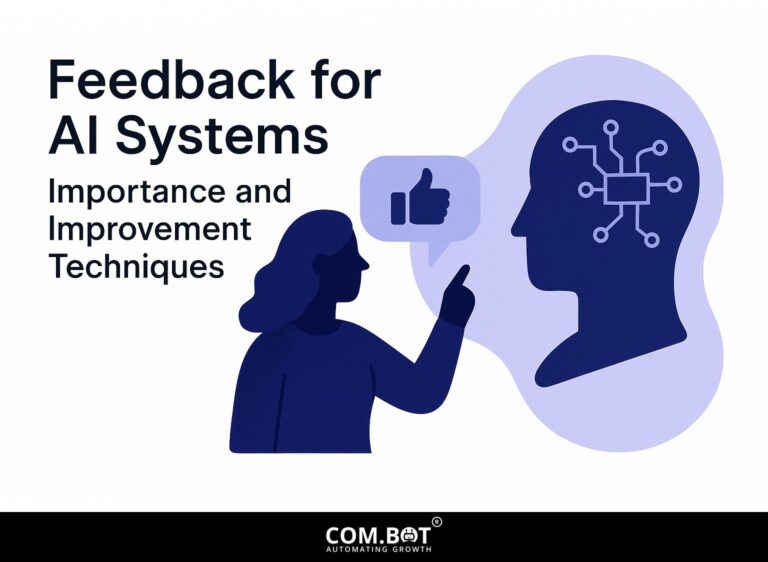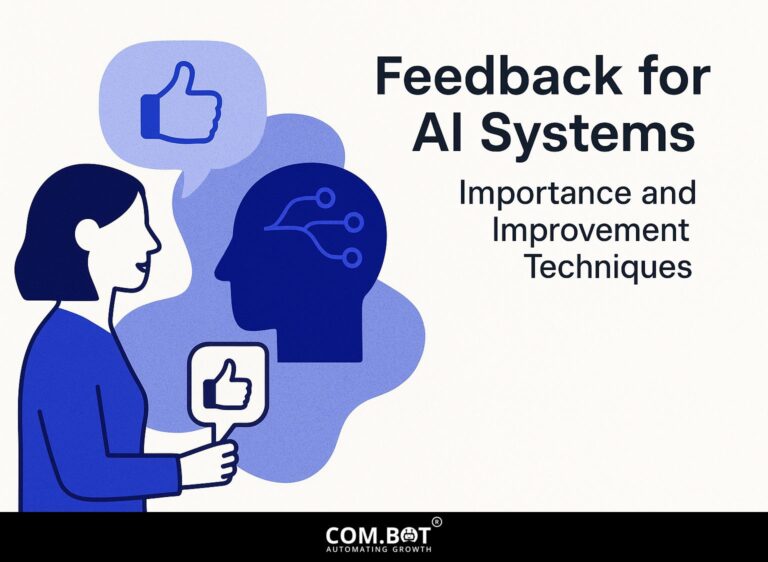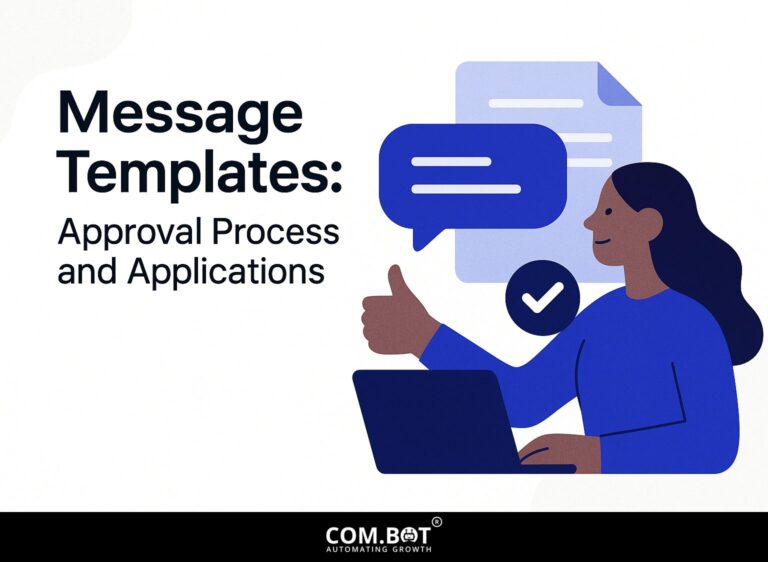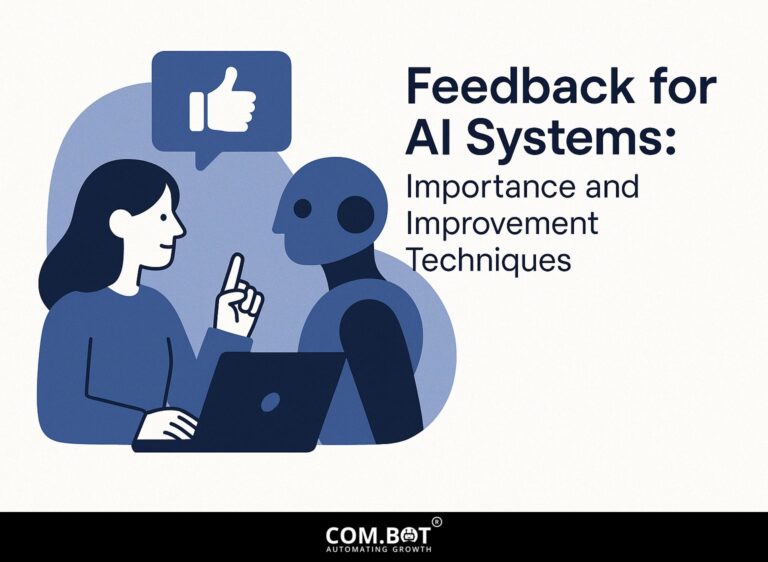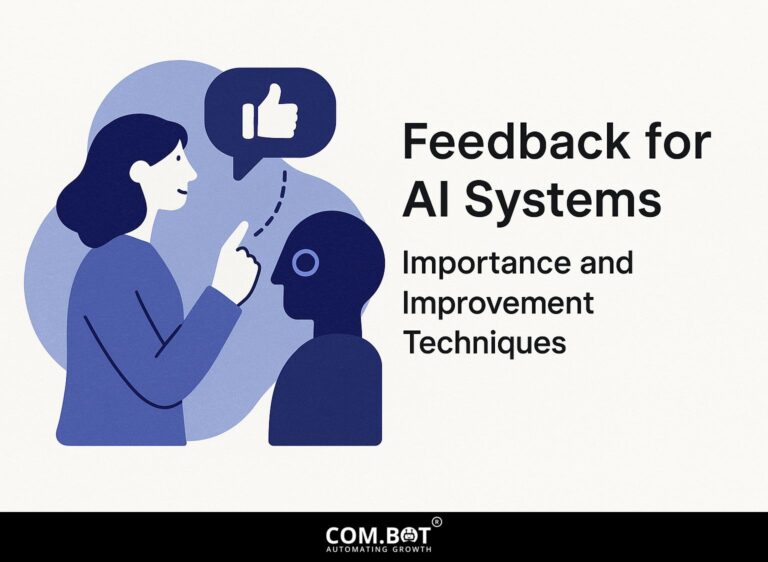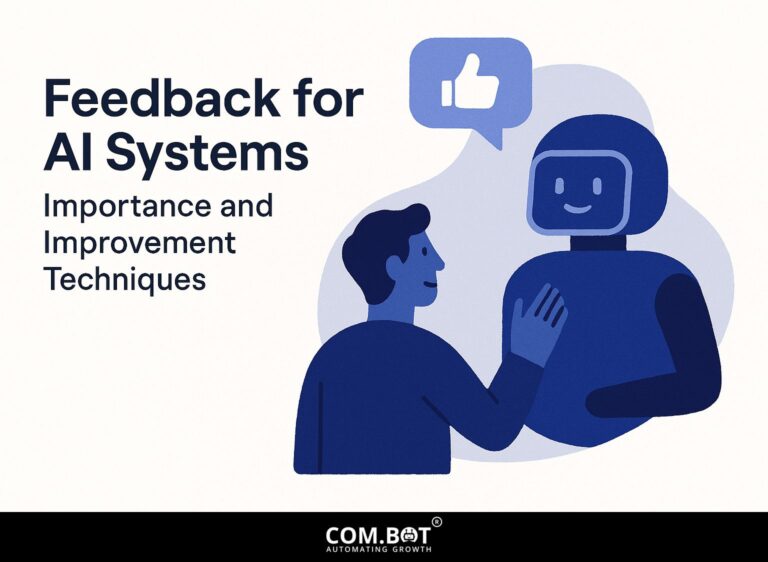Feedback for AI Systems: Importance and Improvement Techniques
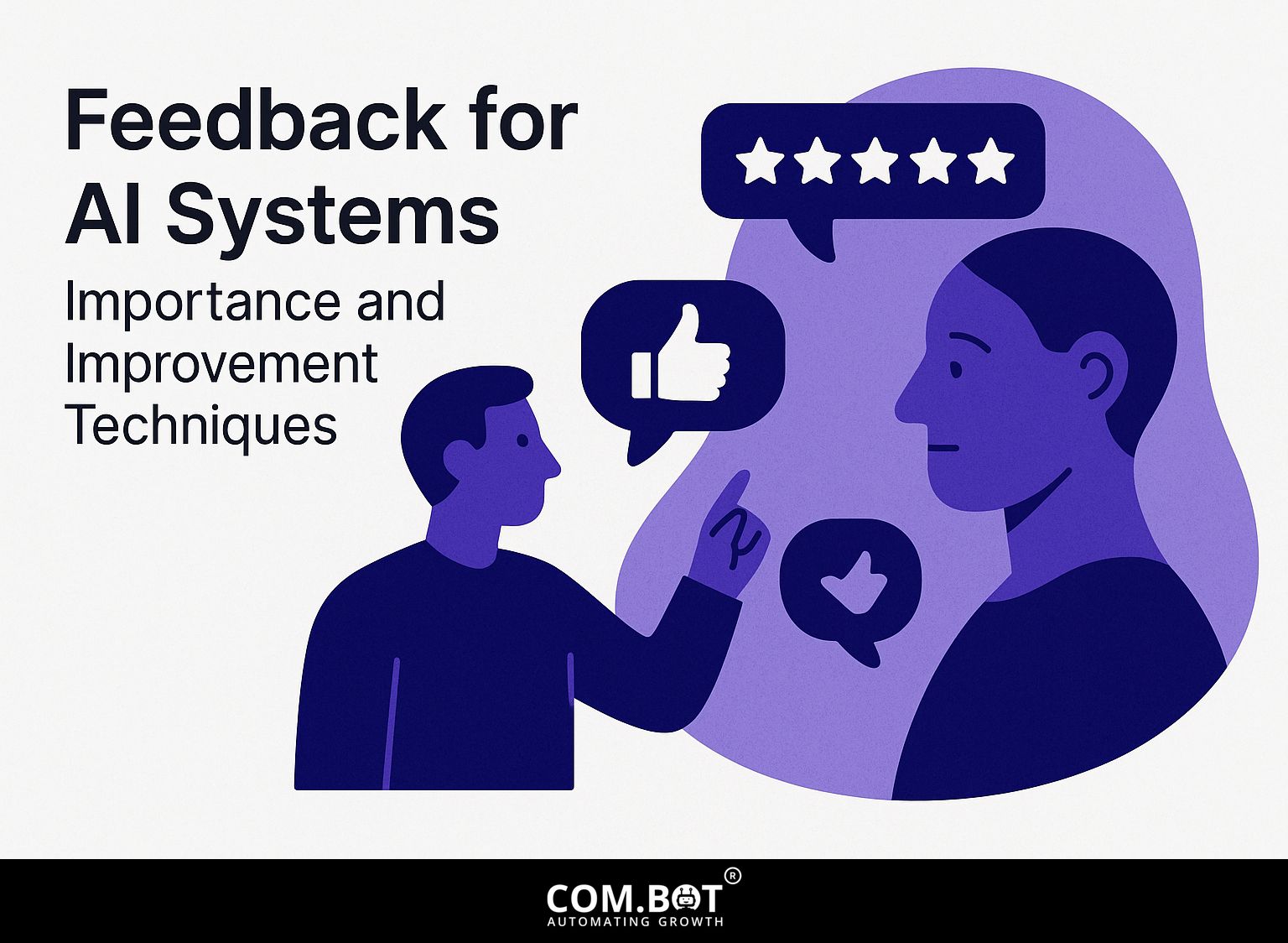
As Artificial Intelligence progresses, human feedback is important to improve AI systems. By using reinforcement learning techniques and tools like Label Studio, developers can greatly improve machine learning models. This article discusses why feedback is important for AI systems, describes methods for making improvements, and shows how companies like OpenAI use user feedback to develop algorithms that are more effective and fair. Learn how useful feedback can improve AI development!
Key Takeaways:
- 1 AI Feedback Mechanism Impact Analysis
- 2 Importance of Feedback for AI Systems
- 3 Techniques for Gathering Feedback
- 4 Analyzing Feedback Data
- 5 Implementing Feedback for Improvement
- 6 Challenges in Feedback Implementation
- 7 Future Trends in AI Feedback Systems
- 8 Frequently Asked Questions
- 8.1 What is the importance of feedback for AI systems?
- 8.2 How does feedback help improve AI systems?
- 8.3 What are some techniques for providing feedback to AI systems?
- 8.4 Why is it important to provide diverse feedback to AI systems?
- 8.5 What are the potential consequences of not incorporating feedback into AI systems?
- 8.6 How can we make sure feedback improves AI systems?
Definition of Feedback
Feedback in AI is the data gathered about how well the AI is working, which helps make changes to its algorithms.
This type of feedback can be categorized into two main forms: reinforcement feedback and performance metrics.
Reinforcement feedback changes an AI’s actions depending on the rewards or penalties it gets, just like a game changes with user strategies. Performance metrics, on the other hand, assess an AI’s outputs against expected results, helping developers pinpoint areas for improvement.
Google’s search algorithm improves over time by analyzing user data, regularly adjusting results based on what people click and their feedback on how relevant those results are.
Role of Feedback in AI Development
In AI development, feedback is essential because it helps improve algorithms and makes the model better at responding to user interactions.
To improve large language models like GPT-3, developers collect feedback from users about the responses to identify mistakes or biases. This process lets them modify training data and tweak model settings based on real-world use.
Getting feedback from users on response accuracy can point out areas that need more focus. Over time, these systems improve in responding, giving users outputs that better match their needs and situations.
AI Feedback Mechanism Impact Analysis
Related insight: Feedback for AI Systems: Importance and Improvement Techniques
AI Feedback Mechanism Impact Analysis
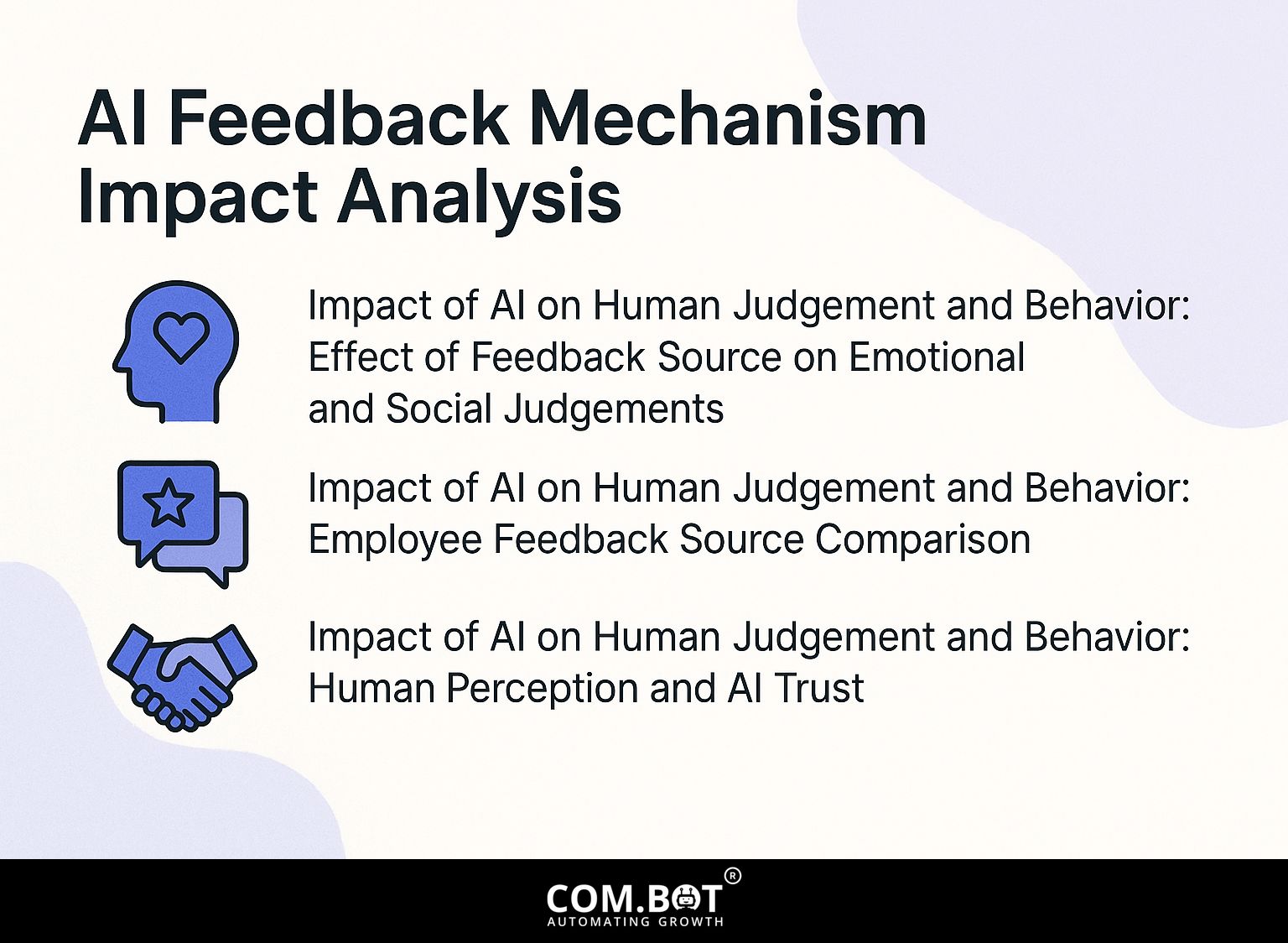
Impact of AI on Human Judgement and Behavior: Effect of Feedback Source on Emotional and Social Judgements
Impact of AI on Human Judgement and Behavior: Employee Feedback Source Comparison
Impact of AI on Human Judgement and Behavior: Human Perception and AI Trust
The AI Feedback Mechanism Impact Analysis Looks into the relationship between AI systems and human judgement, focusing on how AI feedback affects emotional and social choices, worker confidence, and views on trust and bias in AI systems. This analysis highlights both the advantages and challenges associated with AI as a feedback source.
Impact of AI on Human Judgement and Behavior reveals that 80% of users prefer AI feedback, indicating a strong inclination towards AI due to perceived objectivity and efficiency. However, the rise in human bias through AI interaction is significant at 15%, suggesting that reliance on AI can sometimes reinforce existing biases rather than mitigate them. The desire for AI feedback highlights the importance of improving AI systems to make them fairer and reduce biases.
- Employee Feedback Source Comparison: AI’s negative feedback can impact self-efficacy by 38%, more than leader feedback, highlighting the importance of sensitive AI feedback design to support rather than harm employee confidence. Conversely, leader feedback’s lesser impact on shame, at 10%, stresses the need for careful consideration of feedback delivery methods.
Human Perception and AI Trust offers a look at how trust works, with 55% trust in AI systems among those with high AI knowledge. This shows that learning more about AI builds trust, backing educational programs to teach people more about AI. The view that AI feedback is biased is very strong at 90%, emphasizing the critical need for transparency and ethical standards in AI systems to build confidence and reliability.
This analysis of AI feedback mechanisms demonstrates a mixed impact on human judgement and behavior. AI can work fast and make fair decisions, but worries about unfair bias and impacts on confidence mean we need to keep improving and thinking about ethics. Gaining trust by improving AI knowledge and being open about its use is important for AI systems to help in making better decisions.
Importance of Feedback for AI Systems
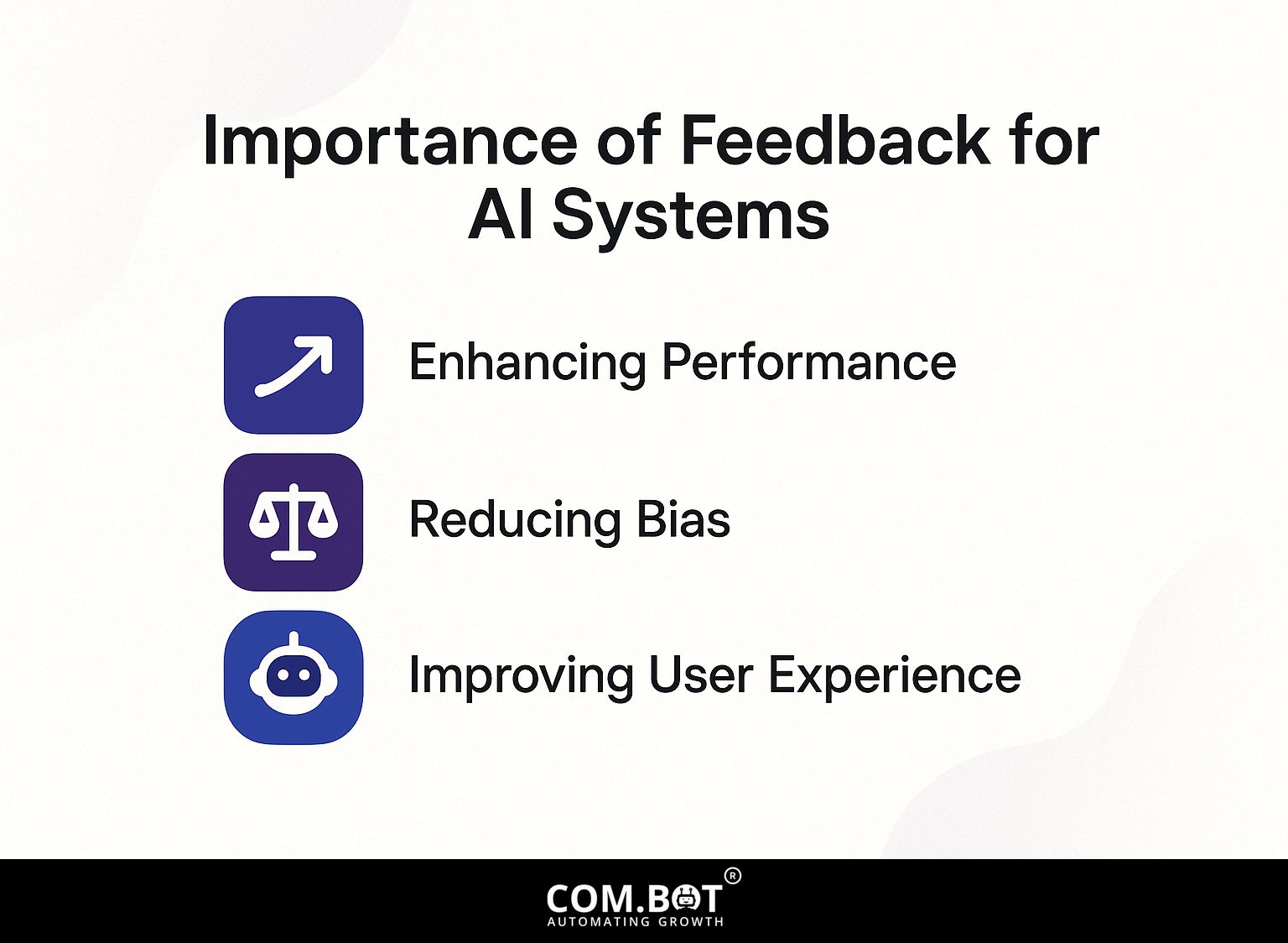
Input from users improves how AI works and helps minimize thinking errors, resulting in higher user satisfaction. For those looking to deepen their understanding, exploring feedback’s role in refining AI systems can be quite enlightening.
Enhancing Performance
Feedback systems have improved AI performance by up to 30%, based on studies of user interactions with AI tools.
To collect user opinions quickly, companies can use surveys, focus groups, and analyze real-time user data.
For example, a company like Intercom often uses customer feedback forms to learn about their chatbots. After looking at this data, they saw lots of users had trouble finding their way around, which led them to improve their interface.
In the past three months, these changes made users happier and increased their participation by 25%. Regularly gathering feedback and using it to improve AI helps keep it developing effectively.
Reducing Bias
By using opinions from different people, AI systems can decrease errors in thinking, leading to fairer and more accurate results.
For instance, a case study involving a recruitment AI revealed that its initial algorithm favored candidates from specific universities, reflecting a bias in its training data.
By using feedback from a varied group of people on the hiring panel, the developers repeatedly improved the algorithm. This led to a 30% increase in the variety of candidates. For an extensive analysis of this approach, our comprehensive study on feedback for AI systems delves deeper into the importance and techniques of improvement.
Tools like Google’s AI Fairness Toolkit can aid in evaluating and mitigating these biases. Regular assessments of AI outcomes lead to more equitable results, demonstrating the power of structured feedback in enhancing AI fairness.
Improving User Experience
Integrating user feedback can lead to a 40% increase in user satisfaction levels, as AI applications become more aligned with user needs.
To effectively gather user feedback, consider utilizing tools like Survicate for surveys, Hotjar for heatmaps, and Intercom for real-time user communication.
Start by running brief surveys at important moments when users interact or review session recordings to learn about how users act.
Metrics like Net Promoter Score (NPS), Customer Satisfaction Score (CSAT), and user engagement levels can help you improve your design process.
Check this data often to make updates, improve the AI’s performance, and keep it aligned with changing user needs.
Techniques for Gathering Feedback
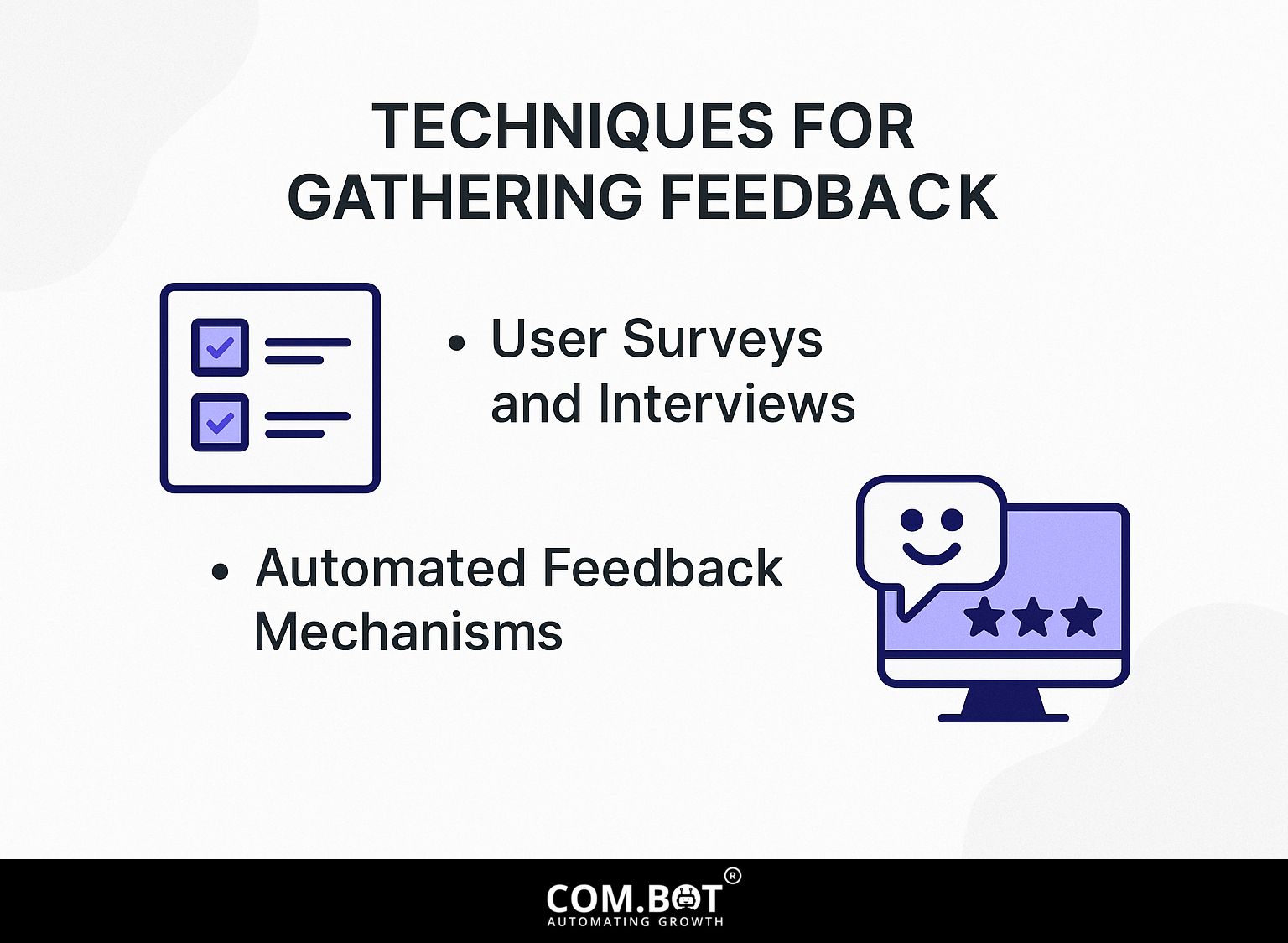
Gathering feedback quickly can be done by using methods such as user surveys and tools that provide information rapidly. As mentioned in our detailed exploration of feedback techniques for AI systems, leveraging these tools effectively can significantly enhance the responsiveness and adaptability of your strategies.
User Surveys and Interviews
User surveys can provide useful information, and a well-created survey can increase response rates by up to 50%.
To carry out effective user surveys, use tools like SurveyMonkey for more options or Google Forms for an easier approach.
Start by formulating clear questions such as:
- “What features do you value most in our product?”
- “How can we improve your experience?”
These inquiries guide respondents toward providing meaningful feedback.
Use rating scales for questions like, “On a scale of 1-10, how satisfied are you with our support?” This clear method encourages participants to share their thoughts openly, which can improve your service or product choices.
Automated Feedback Mechanisms
Tools that automatically provide feedback, such as in-app prompts, can rapidly collect user thoughts, making feedback usage better.
Tools like Hotjar allow you to create short surveys directly within your application, targeting specific user actions. For example, once a user finishes a task, a feedback request can appear, asking about their experience.
Think about using tools like Qualaroo to show exit surveys, which can give feedback from users leaving your site.
Using these tools well can give you helpful details, like updates to the user interface or better features, that clearly increase user happiness. Checking this feedback often helps you make your product better quickly.
Analyzing Feedback Data
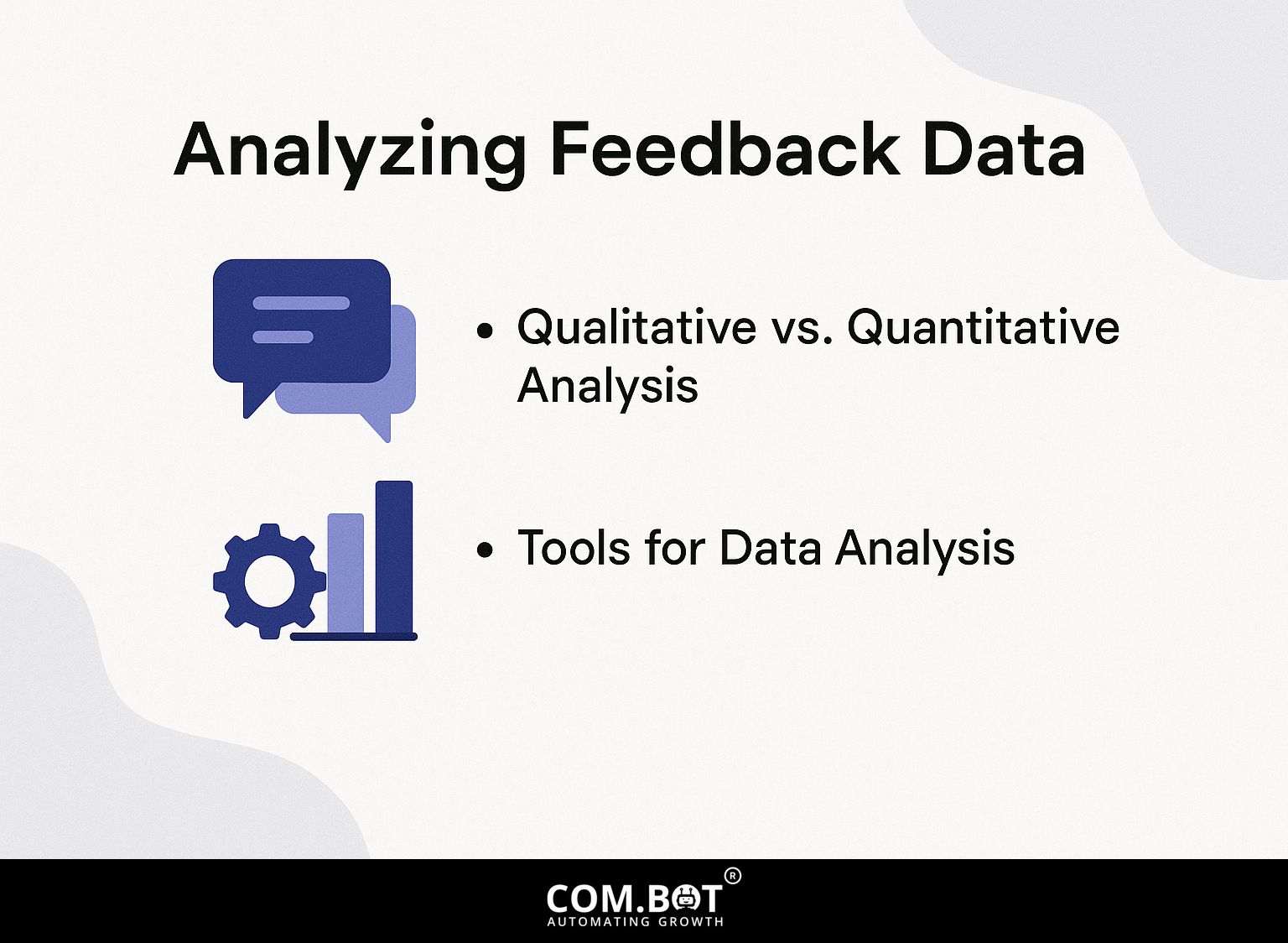
Looking at feedback data is important for gaining useful information. This process uses both descriptive and numerical approaches to evaluate what users think.
Qualitative vs. Quantitative Analysis
Qualitative analysis involves exploring user opinions through interviews, while quantitative analysis focuses on numerical data collected from surveys.
Researchers use tools like NVivo for qualitative analysis to find themes and patterns in opinions collected from detailed interviews. This method clearly shows how users feel, which is helpful for creating new products.
In contrast, Google Analytics serves well for quantitative analysis, offering metrics such as website traffic and user behavior trends. By using both methods together, companies can fully understand their audience, allowing for decisions based on data that improve how happy and involved customers are.
Tools for Data Analysis
There are different tools to study feedback data. Tableau helps create graphs and charts, while Python libraries such as Pandas are used for analyzing data with statistics.
Tableau is priced from $70 per user per month and excels in creating interactive dashboards that visualize trends from various feedback sources.
Microsoft Power BI offers similar tools starting at $9.99 for each user monthly, making it a budget-friendly option for small teams.
For more advanced users, Python libraries such as Pandas and Matplotlib are free and provide extensive customization capabilities for detailed statistical analyses and visualizations.
Pick a tool that matches your team’s skills and financial resources for successful data analysis.
Implementing Feedback for Improvement
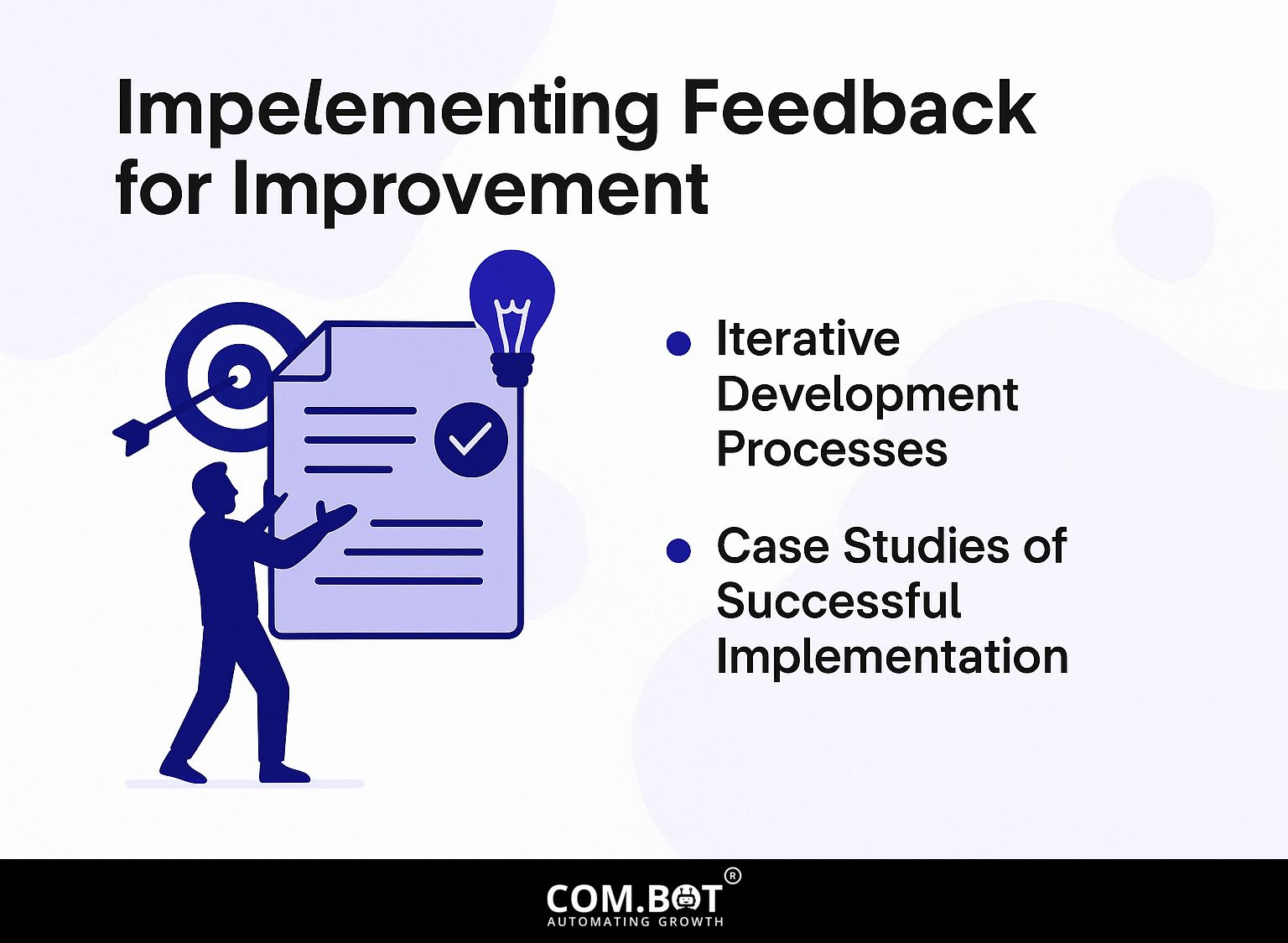
Using feedback well helps AI applications get better through repeated development steps.
Iterative Development Processes
Methods like Agile support ongoing improvement and enable quick use of user feedback in AI systems.
In Agile, the process has some important steps.
-
First, during sprint planning, teams prioritize features based on user feedback, defining a clear goal for each sprint. For example, if users want a chatbot with better features, the team could plan to add specific improvements in a two-week period.
-
Next, regular retrospectives provide a platform for team members to discuss what worked and what didn’t, facilitating immediate adjustments.
Spotify is a good example; it frequently updates its app based on user data to meet user needs.
Case Studies of Successful Implementation
Case studies illustrate the impact of effective feedback implementation, such as Amazon’s recommendation system, which improved user engagement by 25%.
A significant example is Stitch Fix, a personal styling service that uses customer feedback to improve its AI systems. By using internal tools, they study how stylists and clients communicate and use immediate feedback, resulting in a 30% rise in customer happiness.
Spotify listens to what users say about their song choices to make the Discover Weekly feature better, producing playlists that fit users’ likes. This change has increased user interaction by over 40%. These examples highlight the significance of integrating feedback loops in AI systems to drive user engagement and satisfaction.
Challenges in Feedback Implementation
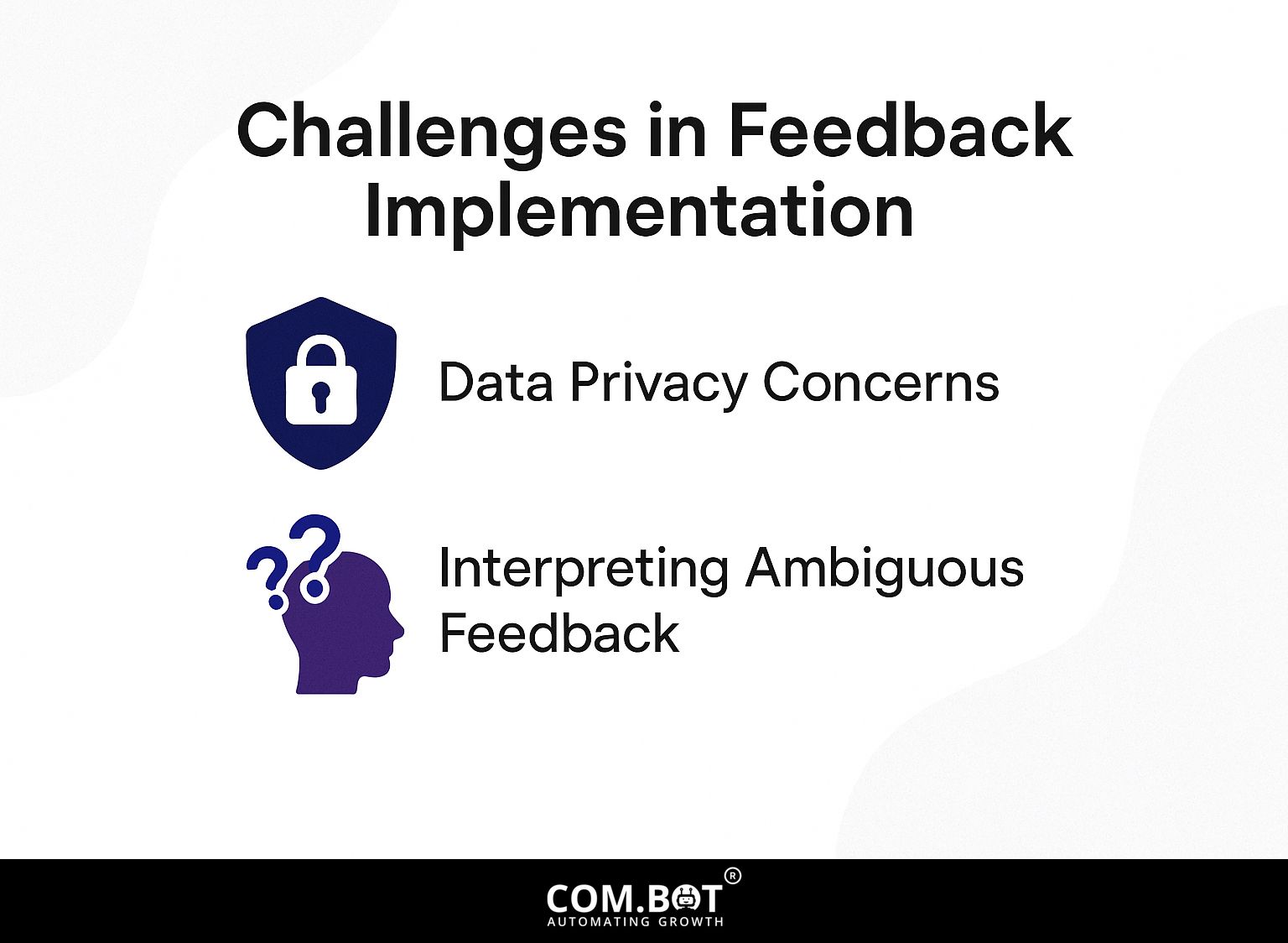
Although it is helpful, using feedback comes with some challenges, such as protecting data privacy and figuring out vague feedback.
Data Privacy Concerns
Data privacy is very important when gathering feedback. Following rules like GDPR is key to keeping user trust.
To handle these challenges, companies should put in place clear feedback systems. For instance, using clear consent forms that outline data usage can help build trust.
Tools like SurveyMonkey offer GDPR-compliant templates, ensuring that user data is handled responsibly. Organizations like Buffer have found success by collecting feedback data without revealing identities and combining information to reduce privacy concerns.
Setting up a strong data management policy and doing regular checks will improve compliance and keep user data safe.
Interpreting Ambiguous Feedback
Confusing feedback can lead to mistakes, so it’s important to set up clear ways for users to provide feedback.
One effective strategy to mitigate this is to employ follow-up questions. For instance, if feedback indicates dissatisfaction, ask, “Can you specify which aspect didn’t meet your expectations?” This clarifies the issue.
Asking specific questions can be helpful, like, “I noticed you mentioned `content quality.’ Do you mean the depth, relevance, or format?” A real-life situation happened in a project where unclear remarks about user experience were clarified by directing the team with focused questions, resulting in practical changes and better user satisfaction.
Future Trends in AI Feedback Systems
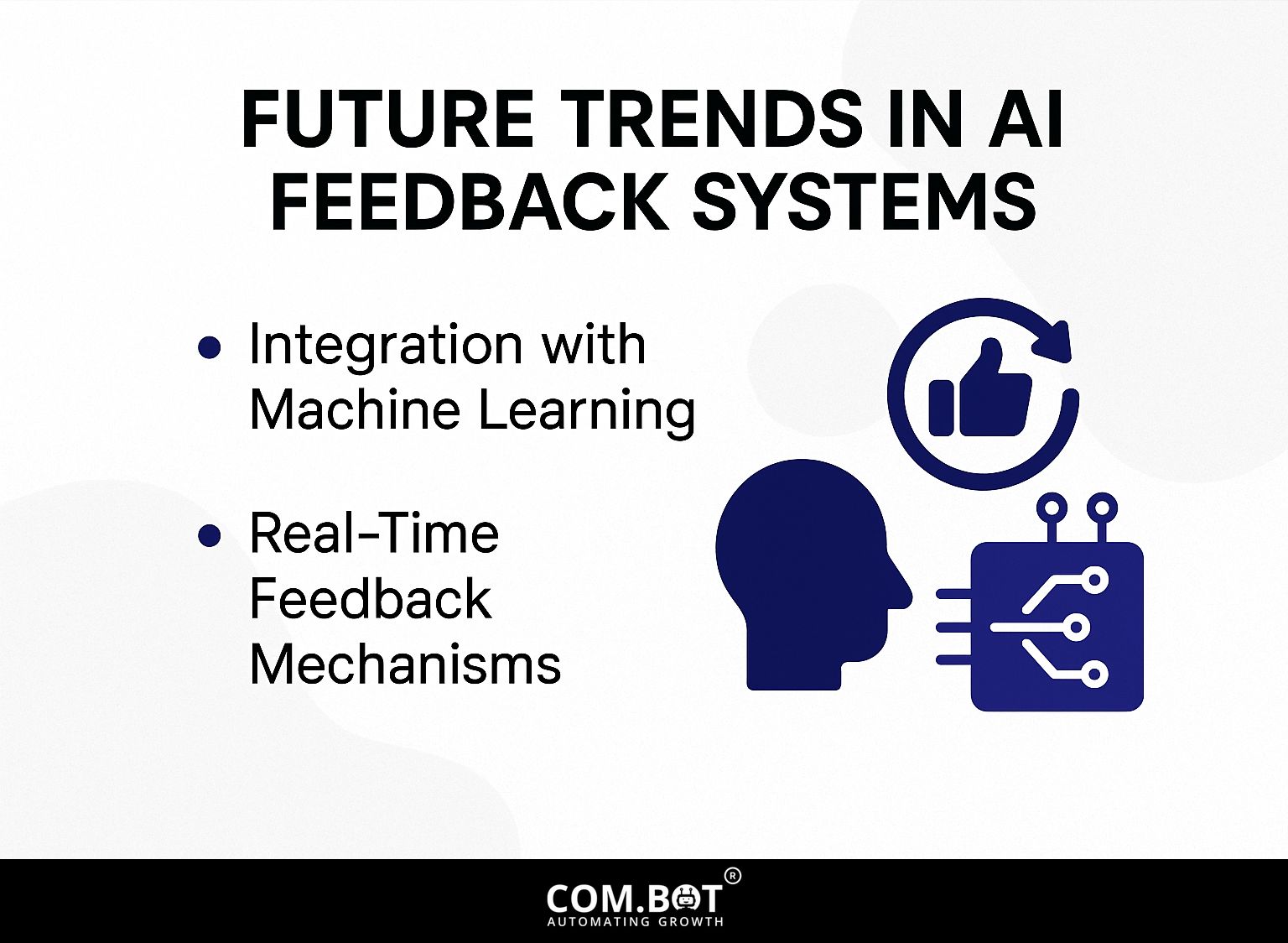
AI feedback systems will soon see new developments, focusing on immediate monitoring and improved ways to combine feedback. Those interested in understanding the importance and improvement techniques of these systems might find our insights on feedback for AI systems beneficial.
Integration with Machine Learning
Using machine learning with feedback systems helps AI to keep getting better, learning, and changing over time.
Immediate feedback helps algorithms improve their predictions and replies. Recommendation systems, like the ones Netflix uses, analyze user behavior on the platform to suggest content based on personal tastes.
Google’s search algorithms use user feedback to improve the relevance of search results. One effective method for implementing feedback loops is the use of A/B testing, where variations of outputs are evaluated based on user engagement metrics.
Tools like Optimizely or Google Optimize allow you to perform these tests, helping machine learning models get better by learning from real user behavior.
Real-Time Feedback Mechanisms
Real-time feedback systems allow users to provide input instantly, improving how quickly AI applications can react and adjust.
Companies like Drift and Intercom effectively use chatbots to gather user feedback instantly. Drift uses a chatbot that appears when people visit the website, asking them for their opinions on design or how easy it is to move around. This immediate input helps tailor the user experience on the spot.
Similarly, Feedbackify provides customizable feedback widgets that can be embedded on any webpage, allowing users to express their opinions or report issues. By using these tools, brands can change their products and increase customer happiness quickly, creating a more interested audience.
Frequently Asked Questions
What is the importance of feedback for AI systems?
Feedback is important for AI systems because it helps them keep learning and getting better at what they do. AI systems need feedback to change their algorithms and improve the accuracy of their predictions or choices.
How does feedback help improve AI systems?
Feedback provides AI systems with data on the outcomes of their predictions or decisions, which allows them to identify and correct any errors or biases in their algorithms. This leads to improved accuracy and efficiency over time.
What are some techniques for providing feedback to AI systems?
Some techniques for providing feedback to AI systems include supervised learning, where a human provides labeled data, and reinforcement learning, where the system receives rewards and punishments for its actions.
Why is it important to provide diverse feedback to AI systems?
AI systems can show bias and give wrong results if they are only given one kind of data. Giving different kinds of feedback helps the system learn from various points of view and make better decisions.
What are the potential consequences of not incorporating feedback into AI systems?
Without feedback, AI systems can continue to make the same errors and biases, which can have serious consequences in areas such as healthcare, finance, and criminal justice. It is important to continuously provide feedback to prevent these risks.
How can we make sure feedback improves AI systems?
To use feedback well, you need to know the system’s goals and supply good, trustworthy data. Regular updates to the system’s algorithms are necessary to include new feedback and improve how it works.
